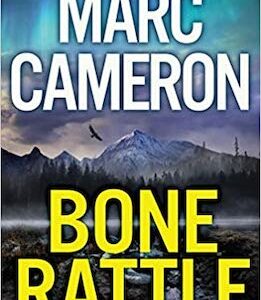Show don’t tell. Avoid flashbacks like the plague. Don’t info-dump backstory. Get rid of your prologues.
There is no shortage of advice and rules out there for the burgeoning writer. However, as long as each of the above reveals something about your main character in a vivid and interesting way, I would argue those rules can be seen as—in the immortal words of Captain Barbossa—“more what you’d call ‘guidelines.’”
As a reader, one of my favorite ways authors break these rules is by playing with form and incorporating epistolary or other non-prose elements in their fiction. I adore prose, but nothing makes me more interested in a book than seeing snippets of diary entries, letters, emails, or other types of writing scattered throughout a book’s pages. They’re like little chocolate-covered espresso beans: a sweet, powerful shot of adrenaline for a novel.
Why? Because when done right, these scenes can be startlingly efficient in revealing a whole lot about the character and the plot without resorting to tired paragraphs full of backstory and description. I made use of this trick in my debut Girl, 11 when I incorporated podcast transcripts throughout. The novel follows Elle Castillo, an amateur investigator determined to solve the cold case of Minnesota’s most notorious serial killer, The Countdown Killer. Since it’s a cold case, I struggled to demonstrate how TCK had terrorized the community during his years of operation without doing a bunch of flashback scenes or paragraphs of backstory mixed in with the contemporary plotline. When I had the idea to make Elle a podcast host, those pieces fell into place. This gave me an excuse to let her interview people who were directly impacted by TCK’s crimes so they could share their stories in a way that seemed fresh. It also let me show a different side of Elle: the confident, polished investigator she wants to portray for her listeners; in contrast to the impulsive, anxious person readers know her to be from the other chapters.
I’ve read dozens of novels that make use of various types of writing to solve plot or character issues. Here are seven books I recommend if you’re looking for ways to play with the writing form.

The Girl from Widow Hills by Megan Miranda
We meet Olivia as an adult, but we know a terrible childhood accident shaped the course of her entire life. When she was swept away in flood waters and trapped in the drainage pipes underground for several days, she became a national news sensation. Now, she has done everything she can to rewrite her story—changing her name, moving far away from home, cutting the mother who exploited that tragedy out of her life. Through a mix of newspaper articles, interview transcripts, and book excerpts, Miranda lets you get a peek into Olivia’s life during and after the accident. Readers begin to see how the public latched on to this story, and how they refused to let it—and her—go, long after she was found and returned home safely.

They All Fall Down by Rachel Howzell Hall
Unbeaten for its use of symbolism and metaphor, Howzell Hall’s contemporary interpretation of Agatha Christie’s And Then There Were None makes use of emails throughout the novel to build suspense and mislead the reader. The main character, Miriam Macy, is thrilled when she receives an email congratulating her on winning an all-expenses-paid trip to a private island. As things take a dark turn in this strange group of strangers, the snippets of emails from the contest organizers, as well as emails between Miriam and her daughter back home, start to take on a sinister tone as the reader learns that none of the characters in this book is reliable in what they’re telling each other—or themselves.
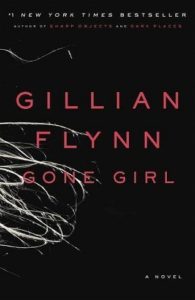
Gone Girl by Gillian Flynn
I would be remiss not to mention the famous diary entries in Gone Girl. If you haven’t read the book or watched the movie, there will be spoilers ahead. Amy’s diary entries are our first introduction to her character, and they’re a powerful one. We can already see her husband is a bit of a dirtbag in the aftermath of his wife going missing, and her diaries reinforce this narrative. They paint her as a longsuffering, patient wife who loves her husband and is just doing the best she can to make him happy. That’s why the discovery that the diary is a carefully constructed fiction meant to point the finger at her husband after her planned disappearance is such a powerful tool. For those who took the diaries at face value, this was a shocking twist that couldn’t have been accomplished any other way.
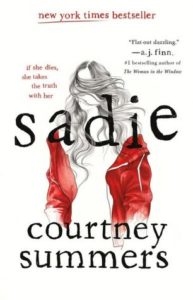
Sadie by Courtney Summers
My book wouldn’t exist in its current form if I hadn’t read Sadie. These days, there are plenty of books that make use of podcast transcripts as part of the narrative, but this was one of the first and still had the strongest impact on me as a reader. The story is told through the perspective of Sadie, a young girl determined to find her sister’s killer, and West McCray, a podcast host working in the near-future on trying to find Sadie after she goes missing. The transcripts are expertly constructed, building the tension to a heart-stopping, astonishing end that I still find myself thinking about years later.
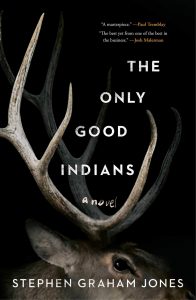
The Only Good Indians by Stephen Graham Jones
While not used heavily, there are some incredibly smart snippets of news reports and headlines used in The Only Good Indians, especially where necessary to avoid disrupting the point of view of the characters while still explaining what happened “off screen”. In a book with no main characters that aren’t Native, these sections also work to convey the bias of the non-Indigenous characters and institutions in this book. When we know what has really happened to these characters, it’s especially jarring to read reports that are bare of important context, usually in a way that creates a callous disregard for the Native person being portrayed.
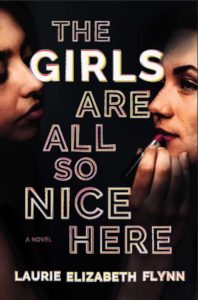
The Girls Are All So Nice Here by Laurie Elizabeth Flynn
This dark academia also debuted in 2021, featuring a cast of women who let you know right away that the title is akin to an inside joke with the reader. Ambrosia Wellington is reluctantly off to her college reunion party, after a series of chipper alumni emails, her amiable husband, and an ominous card demanding she talk with the sender “about what we did that night” convince her to attend. As the novel progresses, Ambrosia becomes more concerned with the content of the emails, and there’s a twist involving them in the story that I won’t spoil for such a new book. Not only do they provide more details on the events of the reunion, but they force Ambrosia to reveal things about herself to the reader that she otherwise might have kept hidden as an unreliable narrator. A fantastic use of the form!

A Visit from the Goon Squad by Jennifer Egan
While not a crime novel, this Pulitzer-winning novel is still one of my most-recommended examples of a book that plays with form in genius ways. Almost every chapter is told not only from a different person’s perspective, but in a different tense or form. The chapter written all in PowerPoint slides from the point of view of a twelve-year-old character is particularly unique. While this is the strongest example, every one of these chapters revealed something new about the character and the story by the way it was told. Nothing was wasted—certainly not the effort and diligence it took to construct this book in such broad and experimental ways.
***

















